
Image: Adam Patrick Murray
There are a ton of laptop deals now that back-to-school season is in full swing. If you’re an engineering student, you’re going to need a machine that can handle resource-intensive coursework. A powerful CPU and loads of memory and storage are an absolute must. Portability is an important factor too, especially if you’re going from class to class. If you’re not sure where to begin your search, don’t sweat it. We’ve assembled a list of laptops that are perfect for engineering students, as they’re both powerful and portable. Read on to learn more.
[Looking for something different? Check out our picks for the best laptops for college students!]
Updated 07/7/2023: To include the Dell XPS 17 (2023) as our new pick for best overall and the Lenovo Legion 5 Pro as our new choice for best for gaming. Read more about how these great new picks can help you succeed in the academic year in our summaries below.
Dell XPS 17 (2023) – Best overall
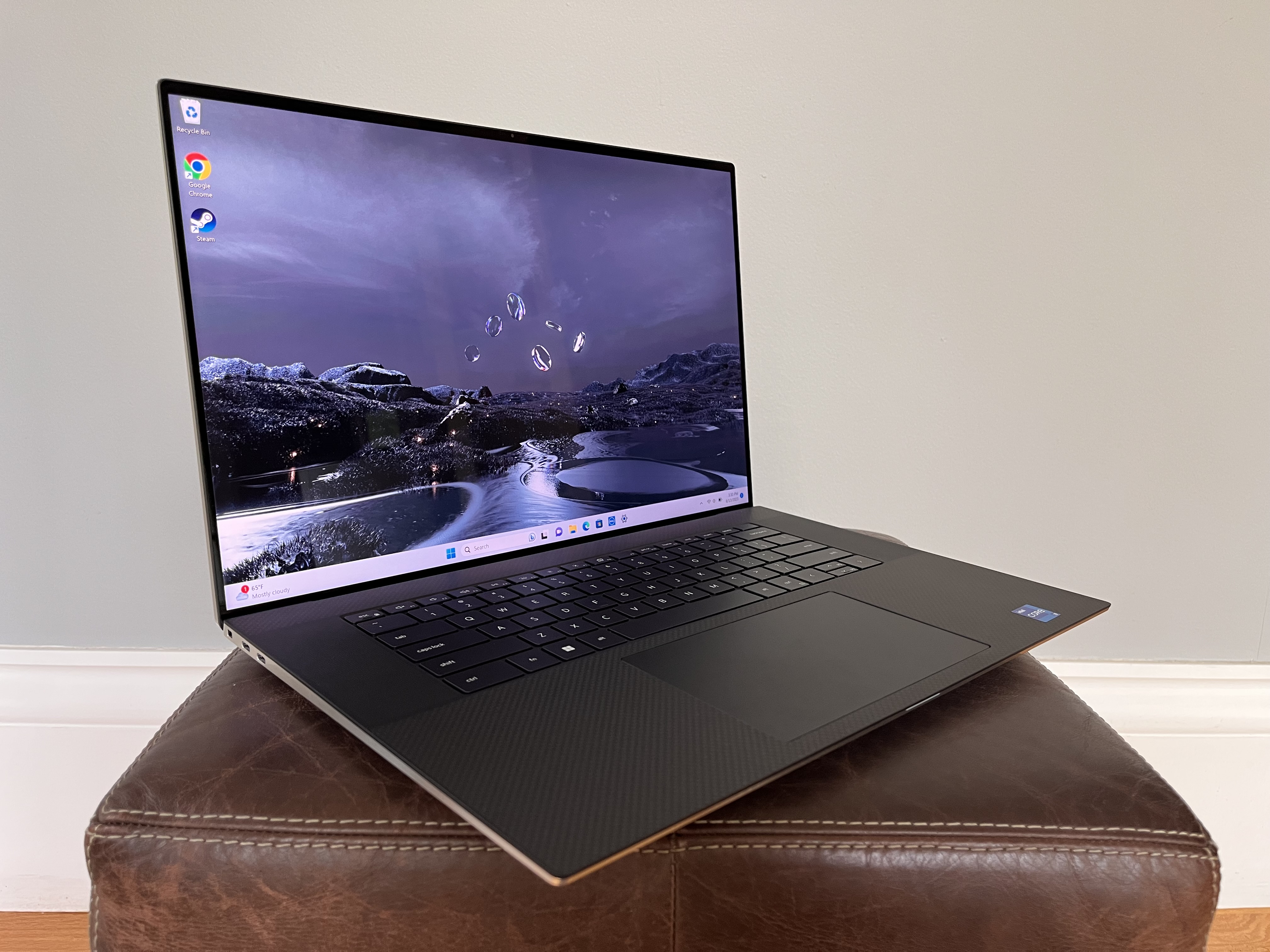
Pros
- Expansive 17-inch 16:10 display
- Thin chassis
- Incredible battery life
Cons
- High price without OLED display
- Low-wattage GPU limits 3D performance
- Low-res 720p webcam
The Dell XPS 17 has a lot going for it. You’re getting super-fast performance, a vivid display, and long battery life. The laptop also provides great connectivity features with four Thunderbolt 4 ports and an impressively long battery life. Under the hood, it’s rocking an Intel Core i7-13700H CPU, an Nvidia RTX 4070 GPU, 32GB of RAM, and 1TB of SSD storage. That’s a ton of memory and storage, which is a good thing if you’re using a lot of resource-intensive applications such as 3D CAD modeling programs
The one real downside is that the XPS 17 weighs just under five and a half pounds, so it’s a real beast. The webcam is only 720p, as well, which may be a downside if you have to do any online classes or video-conferencing. Buy if you can live with those minor shortcomings, the latest XPS 17 is a phenomenal choice.
Read our full
Dell XPS 17 9730 review
Acer Aspire 5 (2022) – Best budget option
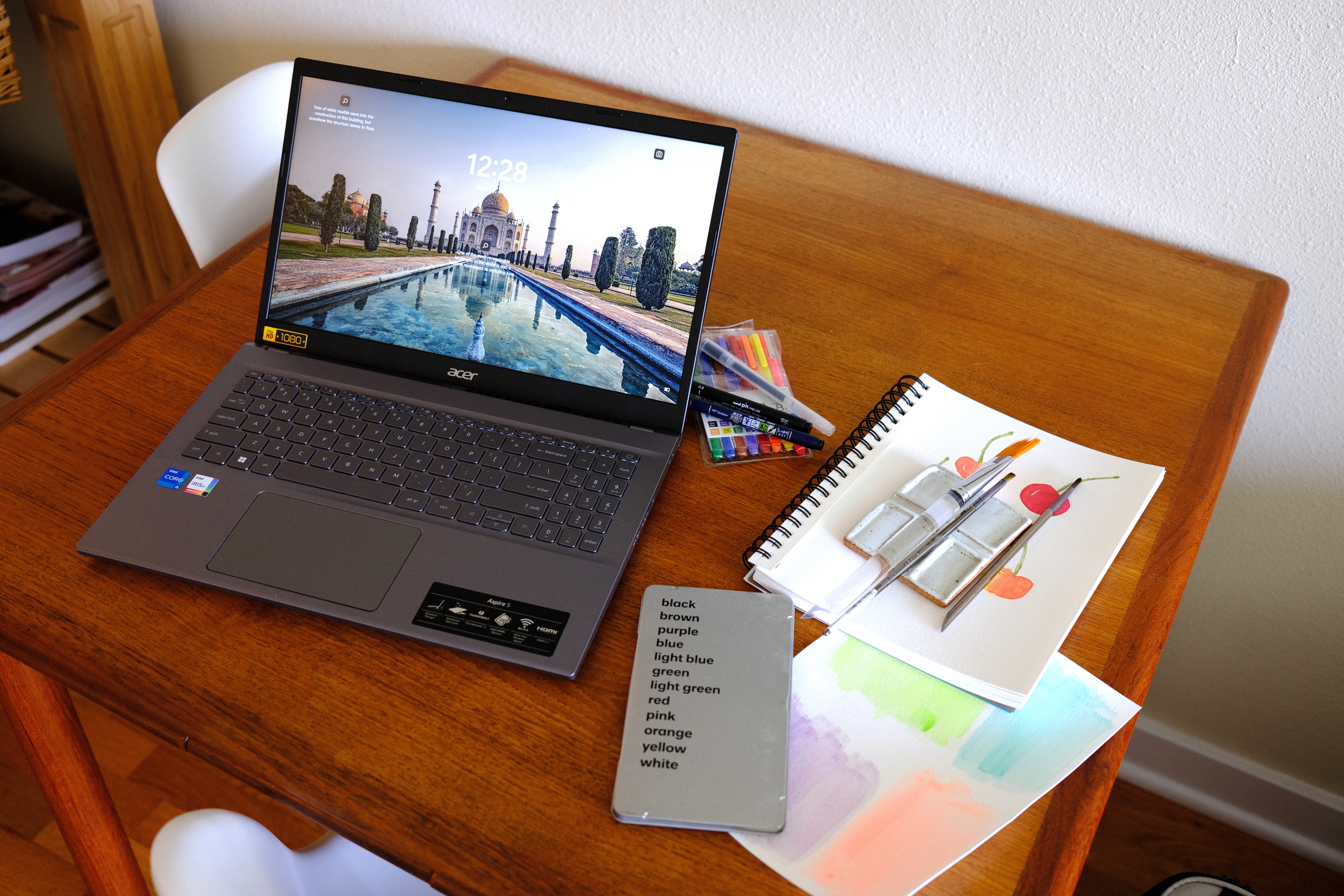
Pros
- Plenty of ports
- Strong specs
- DIY upgrade options
Cons
- Short battery life
- Mediocre keyboard
- No biometric login
If you’re looking to save some cash, the Acer Aspire 5 is a worthy choice. According to our reviewer, it packs a lot of “RAM and SSD space for not a lot of money.” Engineering students need quite a bit of memory and storage in order to effectively run software like Java and Python. It features an Intel Core i5-1235U CPU, Intel Xe integrated graphics, 16GB of RAM, and 512GB of NVMe PCIe SSD storage. There’s also a wide range of connectivity options and you can upgrade the memory by removing the back panel. While the battery life and keyboard leave little to be desired, we feel the pros far outweigh the cons. This is a fantastic pick for the budget-conscious student, that’s for sure.
Read our full
Acer Aspire 5 (2022) review
Acer Swift 5 (2022) – Most portable

Pros
- Sturdy, compact design
- Hi-res 14-inch display with 16:10 aspect ratio
- 12th-gen Core i7 delivers strong performance
- Long battery life
- 1080p webcam
Cons
- Terrible touchpad
- So-so speakers
Need a lightweight laptop to take with you to class? The Acer Swift 5 will surely fit the bill, as it weighs a little under three pounds. It also has a compact design, a 1080p webcam, and impressive battery life. The 14-inch display is “bright and spacious” thanks to the 16:10 aspect ratio and 2560×1600 resolution. Under the hood, you’ll find an Intel Core i7-1260P CPU, Intel Iris Xe integrated graphics, 16GB of RAM, and 1TB of PCIe NVMe SSD storage. The only real knock we have against this machine is the undersized touchpad. However, it’s not a deal-breaker, as you can always plug into an external mouse. It’s a charming little laptop that’s both zippy and travel-friendly.
Read our full
Acer Swift 5 (2022) review
Lenovo Legion 5 Pro (2023) – Best for gaming
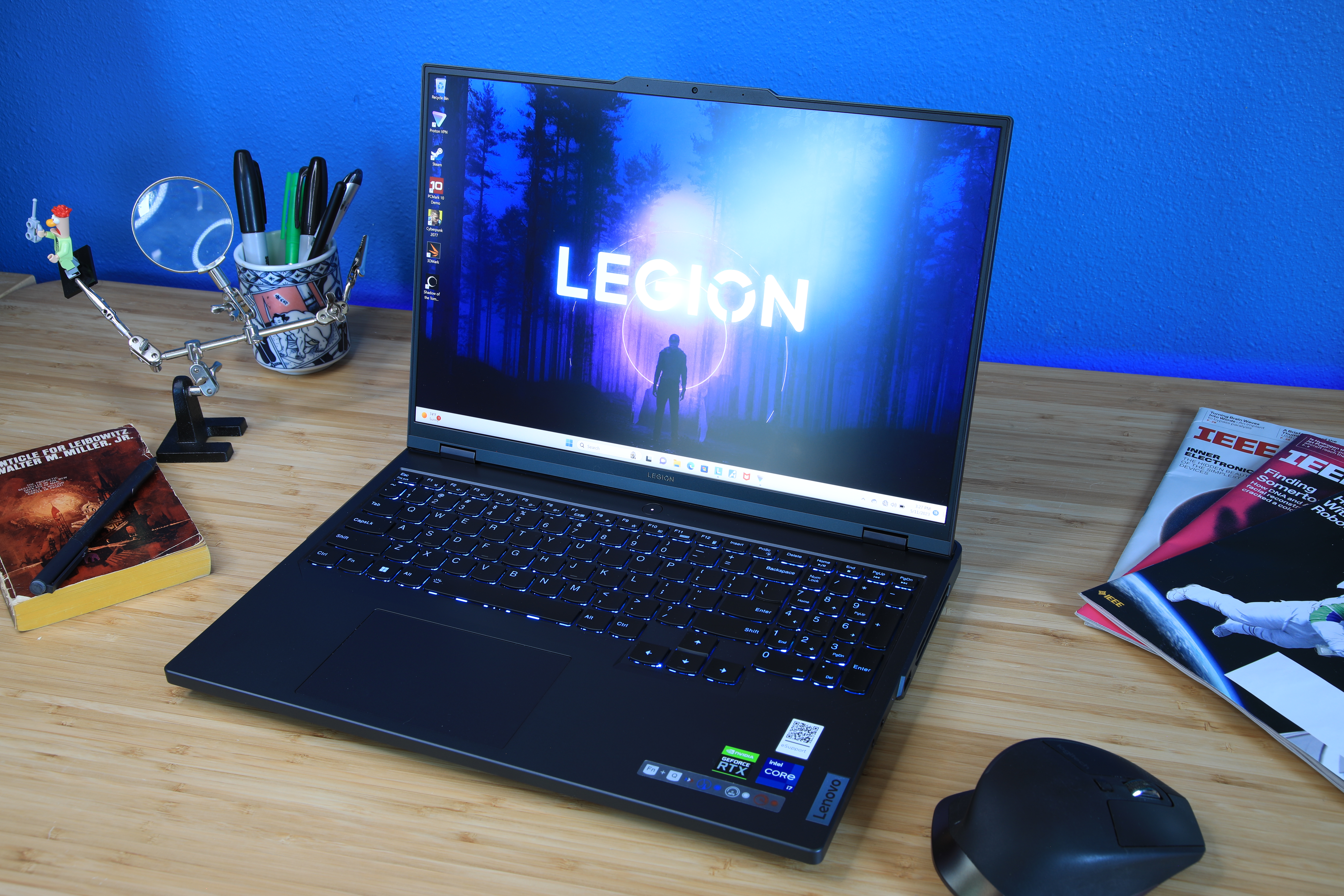
Pros
- Handsome design
- Excellent keyboard
- Lots of connectivity
- Strong CPU and GPU performance
Cons
- Heavy and bulky
- Mediocre display
- Short battery life
Lenovo just continues to improve upon its Legion 5 Pro laptop, which offers awesome gaming performance, superb connectivity features, a durable design, and much more. It can easily handle both schoolwork as well as late-night gaming sessions. While it isn’t exactly cheap, considering the performance features it gives you, the pricing can actually be considered affordable as well.
This laptop is rocking an Intel Core i7-13700H CPU, an Nvidia GeForce RTX 4060 GPU, 16GB of RAM, and 512GB of SSD storage. It performed well in our gaming tests with numbers that land it solidly in the midrange gaming laptop pack. As for the 16-inch display, it has a resolution of 2560×1600 and a maximum refresh rate of 165Hz. We weren’t too impressed with the screen, which, while definitely bright, is not as vibrant as others we’ve seen. Still, if you’re looking for a versatile laptop that can do it all—work and play—look no further than Lenovo’s latest Legion 5 Pro.
Read our full
Lenovo Legion 5 Pro review
HP Pavilion Plus 14 – Best display
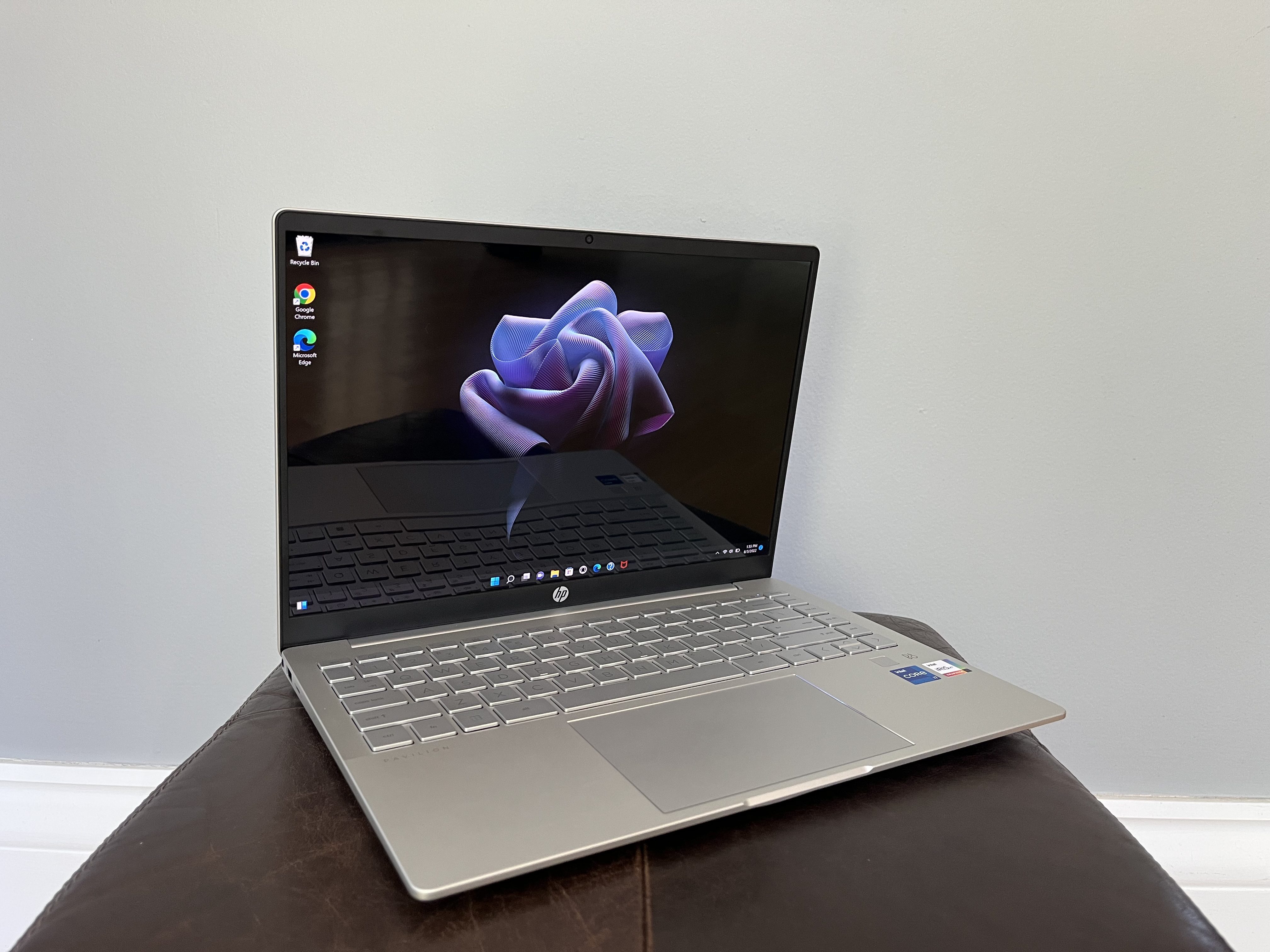
Pros
- OLED display is gorgeous
- Sleek, all-metal chassis
- Strong multimedia performance
Cons
- Woeful battery life
- Onboard memory can’t be expanded post-purchase
- Low contrast between keys and key symbols
If you’re an engineering student, chances are you’re going to be spending a lot of time staring at a screen. You might as well invest in a good one then, right? Well, the HP Pavilion Plus 14 has a gorgeous OLED display. The 14-inch screen has a resolution of 2880×1800, a 16:10 aspect ratio, and a 90Hz refresh rate. According to our tester, the display produces “incredible contrast and deep blacks” as well as a “sharp picture” overall. As for the internal components, it has an Intel Core i7-12700H CPU, Intel Iris Xe graphics, 16GB of RAM, and 1TB of PCIe NVMe SSD storage. While we loved the superb display and durable all-metal chassis, we weren’t thrilled with the short battery life and the low contrast between the keys. Nitpicks aside, this is a great pick if you suffer from eye strain and tension headaches.
Read our full
HP Pavilion Plus 14 review
Asus Zenbook Pro 14 Duo OLED – Best dual display
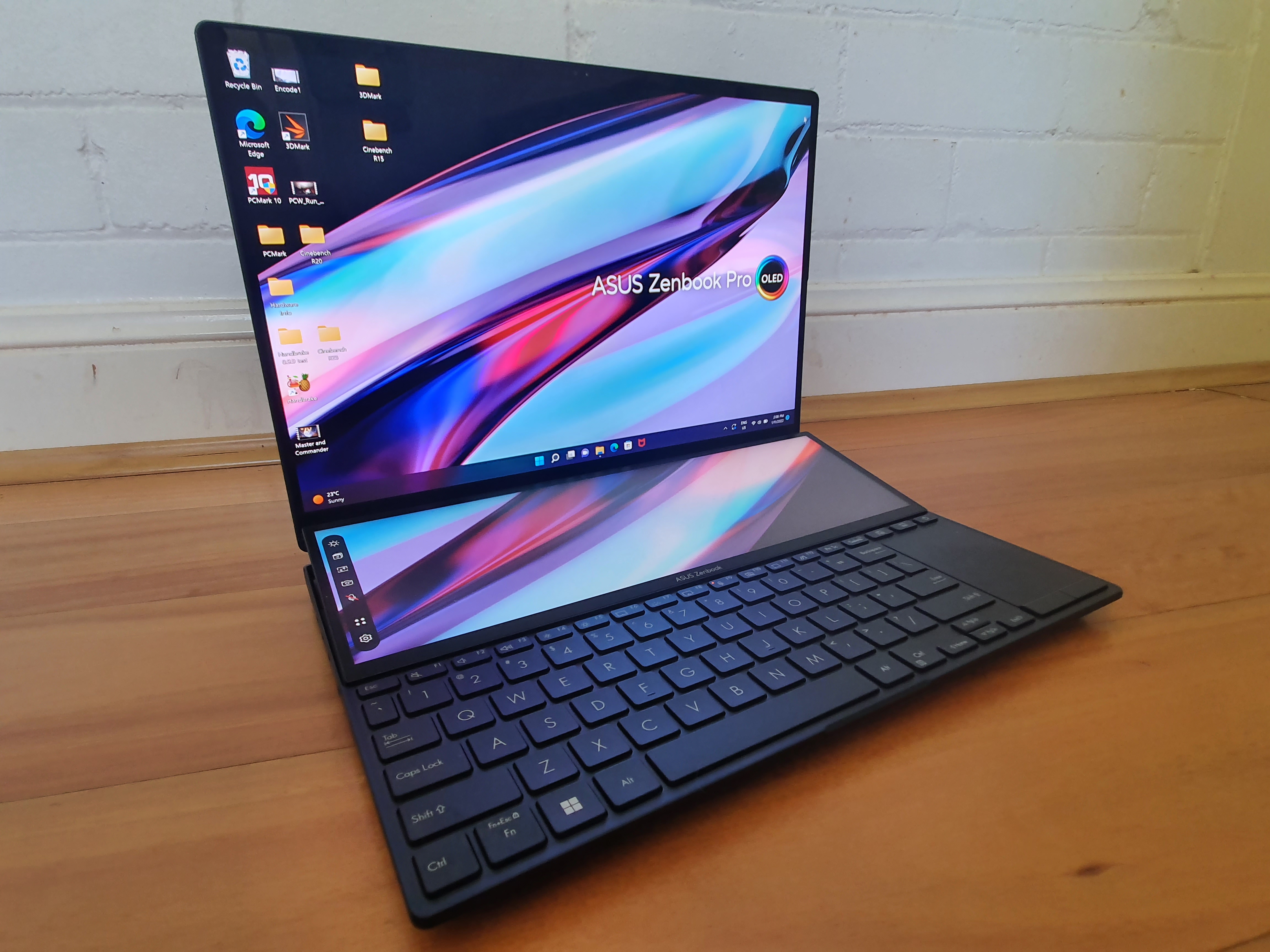
Pros
- Stunning primary display and easy to see secondary display
- Excellent I/O options and wireless connectivity
- CPU / GPU power meets the needs of content creators
Cons
- The battery life is lacking for a productivity laptop
- The trackpad is small and awkwardly placed
- Rear orientated ports can be hard to reach
The Asus Zenbook Pro 14 takes the idea of a nice display and doubles it, sporting a 14.5-inch 4K touch OLED main panel and a truly intriguing secondary 12.7-inch 2880×864 screen located right above the keyboard. This second display is recognized by Windows as a second monitor and you can use it to help with all kinds of tasks, such as a trackpad or to display touch controls for some Adobe apps. It’s not just pretty screens though; the Zenbook Pro 14 comes with a Core i7 processor, RTX 3050 graphics, 16GB of DDR5 RAM, and a 1TB NVMe SSD essentially making it a midrange workstation. The only real drawback is the mediocre battery life, which means you’ll probably need to carry around a charging cable while on the go or in class. Despite this, the Zenbook Pro 14 Duo OLED is a well-tuned productivity machine complete with two high-quality displays and enough performance to create and render those next engineering masterpieces.
Read our full
Asus Zenbook Pro 14 Duo OLED review
How we tested
The PCWorld team puts every Windows laptop through a series of intense benchmarks that test GPU and CPU performance, battery life, and so on. The idea is to push the laptop to its limits and then compare it against others we’ve tested. Below, you’ll find a breakdown of each test and the reasons why we run them.
Windows laptops
- PCMark 10: The PCMark 10 benchmark is how we determine how well the laptop handles general use tasks like web browsing, word processing, spreadsheets, streaming, and so on.
- HandBrake: HandBrake is more intensive than PCMark 10. It measures how long a laptop’s CPU takes to encode a beefy 30GB file.
- Cinebench: Cinebench is a brief stress test of the CPU cores. It renders a 2D scene over a short period of time.
- 3DMark: 3DMark checks if 3D performance remains consistent over time by running graphic-intensive clips. This is how we test a gaming laptop’s GPU.
- Video rundown test: To gauge battery life, we loop a 4K video using Windows 10’s Movies & TV app until the laptop dies.
FAQ
1.
How much processing power will I need?
You’re going to need a good amount of processing power for engineering tasks, so we’d recommend an Intel Core i5 or higher. However, an Intel Core i7 is considered ideal. This type of processor is good for multitasking, gaming, and demanding workloads.
2.
Is RAM important?
Absolutely! The amount of RAM directly impacts the speed of your programs. Engineering students will likely be living in programs like Java and Python, so making sure those programs run smoothly is absolutely vital. The bare minimum we’d recommend is 8GB, but 16GB is better.
3.
What about storage?
You’re going to need quite a bit of space for a slew of engineering programs, so we’d recommend at least 512GB of SSD (solid state drive) storage. If you want more space and have the budget for it, go for 1TB of NVMe SSD storage.
4.
How much should my laptop weigh?
You don’t want to be lugging a five pound beast from class to class. A portable laptop should weigh about three pounds or less. In terms of portability and value, we suggest buying a laptop with a 13- or 14-inch display.
Author: Ashley Biancuzzo, Associate Editor

Ashley is a professional writer and editor with a strong background in tech and pop culture. She has written for high traffic websites such as Polygon, Kotaku, StarWars.com, and Nerdist. In her off time, she enjoys playing video games, reading science fiction novels, and hanging out with her rescue greyhound.









